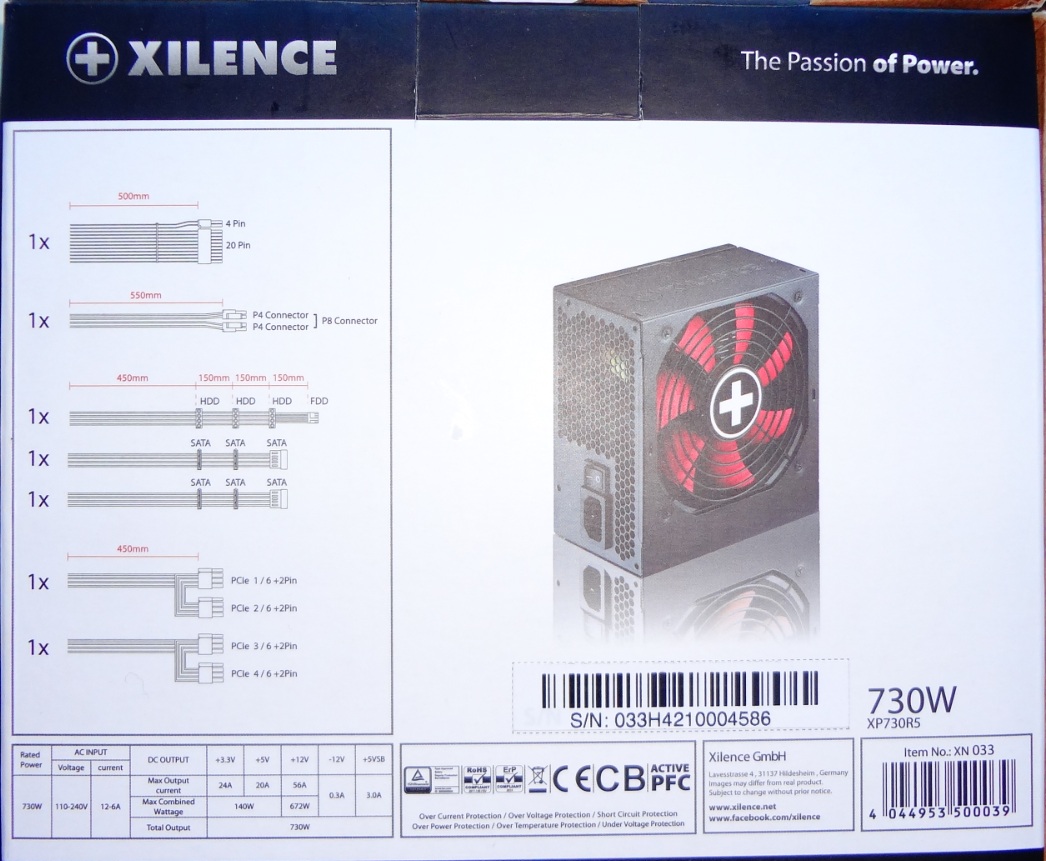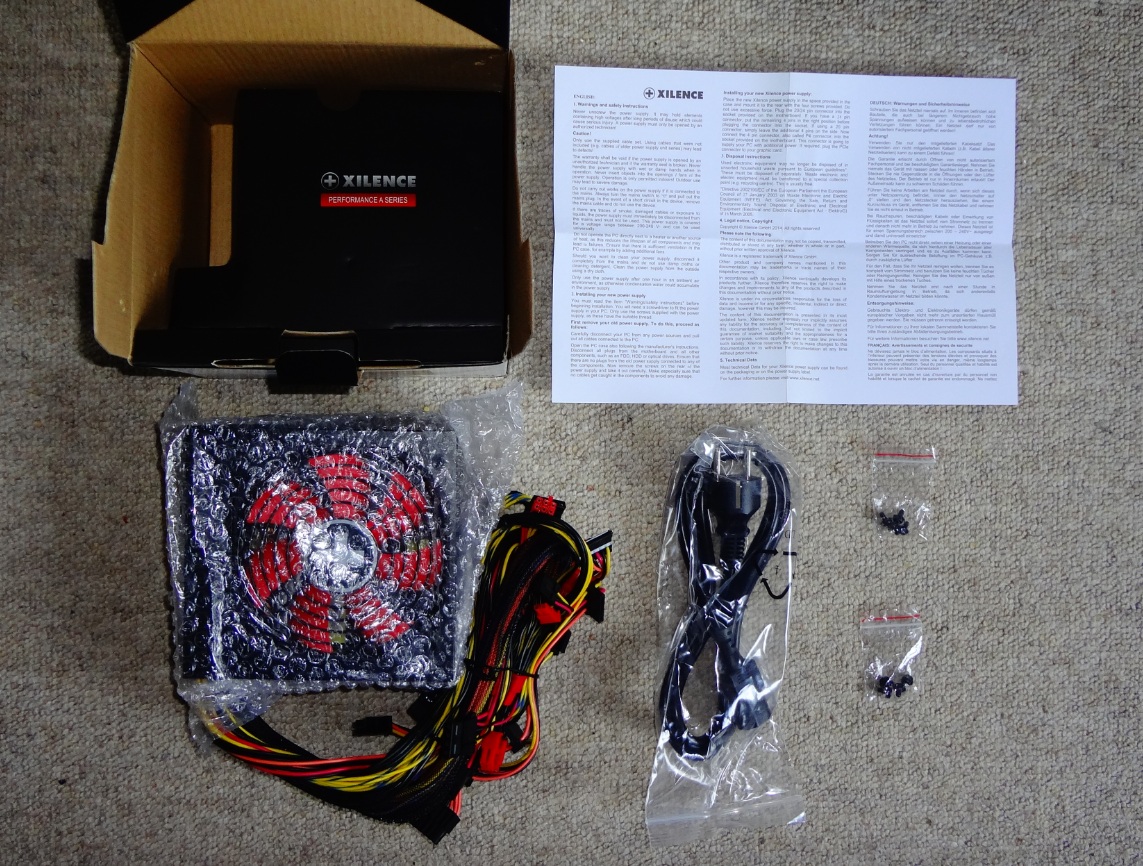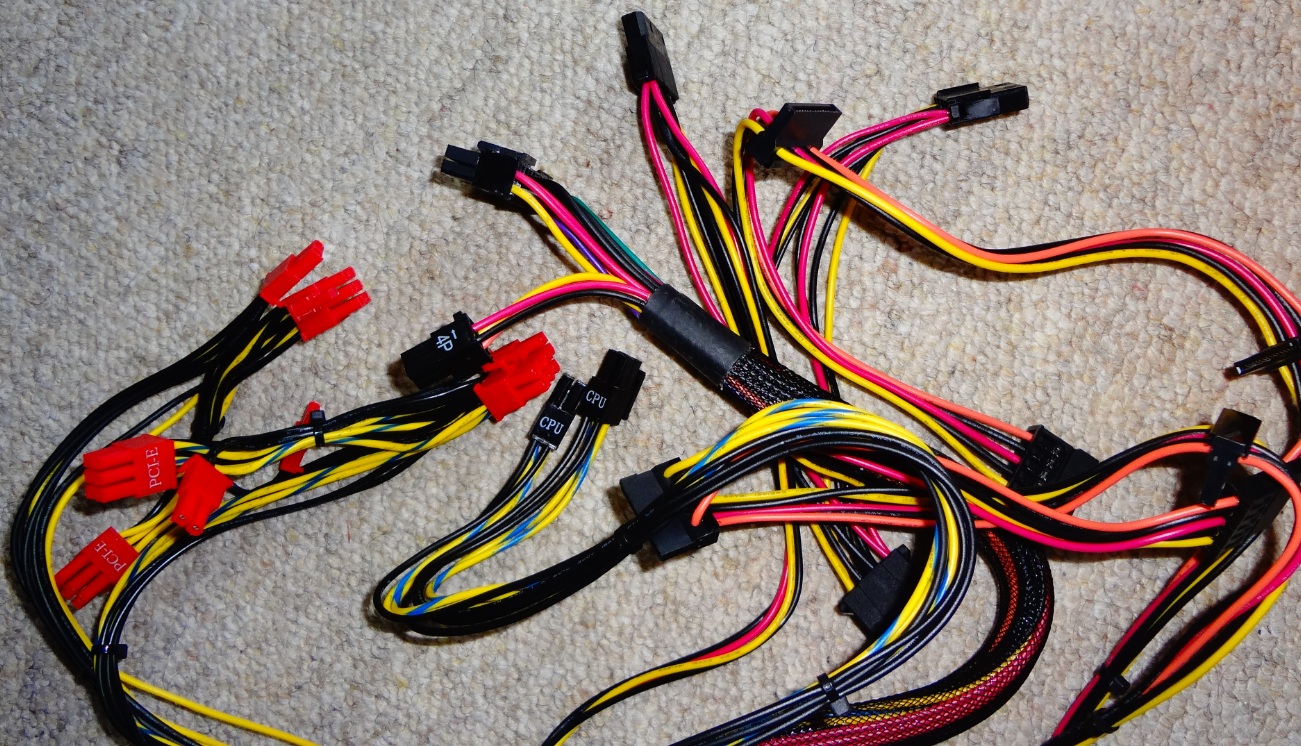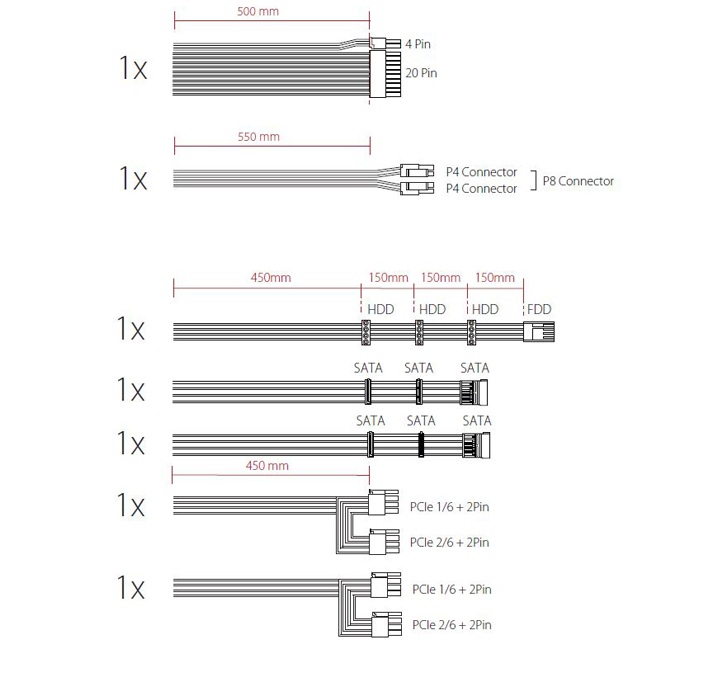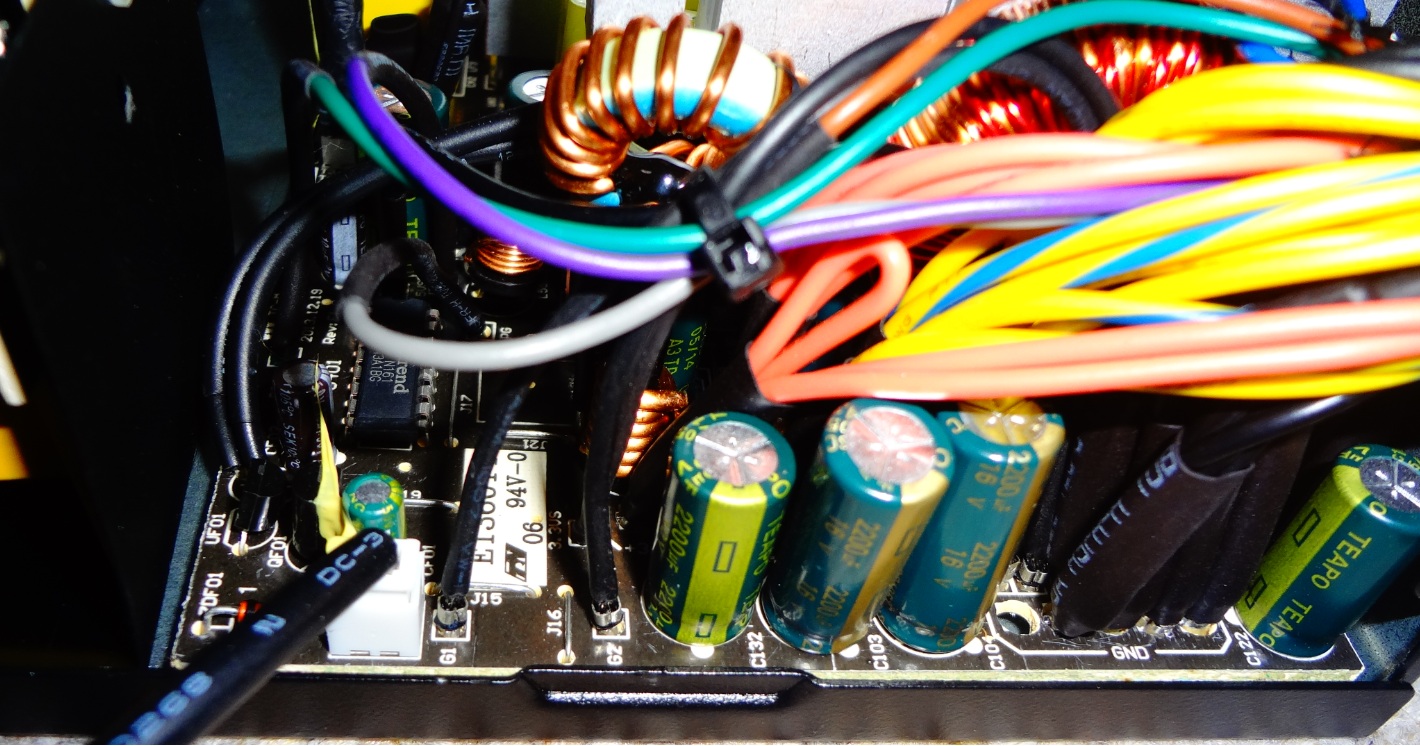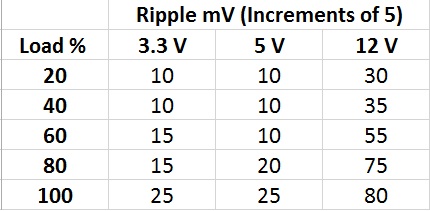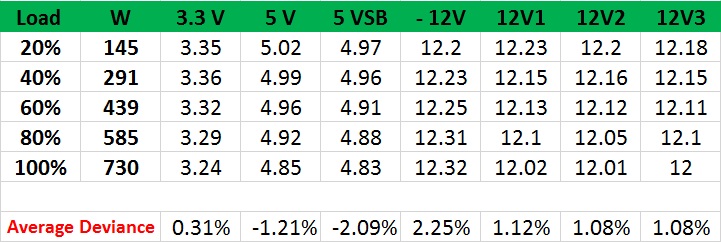
Prolog
Today we are doing a full review for this PSU from Xilence, the top variant from their Performance A Series, which was introduces back in mid-July.
Xilence was founded in 2003 and is a German-Taiwanese, manufacturer of components for cooling and noise reduction in PCs.
Its products include power supplies (PSUs), fans, cases and cooling for CPUs, GPUs and hard drives.
The Xilence development team works continuously on making PCs more silent and energy efficient despite always increasing the computing power and graphic performance.
Xilence not only contributes to making computer technology more comfortable, but also minimizes the noise level and the heat emissions, uses less energy and to protect the environment.
Through close collaboration with engineers in Germany and the Far East along with the consistent utilization of the newest research results through intense exchange between respected universities, Xilence is engaged to minimize the production process concerning material and energy input.
The company has headquarters in Taipei, Taiwan, its production facility being in mainland China.
There are branch offices located in China, Germany and North America.
Price when reviewed: £ 59.10 via Amazon.co.uk
XILENCE SPS-XP730-R5 Performance A Series (730W) Power Supply Unit – ( Power-Supplies ATX)
The main specs:
- Extremely silent cooling: large 120mm fan
- Excellent air flow design for a better heat dissipation
- Full safety design:
- Over Voltage Protection (OVP)
- Under Voltage Protection (UVP)
- Over Current Protection (OCP)
- Over Temperature Protection (OTP)
- Short Circuit Protection (SCP)
- Over Load Protection (OLP)
- Low stand-by consumption
- High energy efficiency: 80PLUS® certified (complies with ErP2014 norm)
- 2 years Warranty
- Combined Power 3.3V+5V of 140W and 12V of 672W
- At 3.3V / 5V / 5VSB / 12V rails with 24A / 20A / 3A / 0,3A / 56A
Packaging and Contents
Comes in a basic box but with a nice looking design and details about the connectors, a very nice touch considering it is a budget PSU.
The included accessories are just what you need really, brief manual, power cord and 4 screws (we got 8).
Visual examination
The PSU itself looks very nice with their logo and that red 120 mm fan.
We think that if the cables were full sleeved it may end up looking even more awesome.
On the side we have the all important specs such as rails, watts and various certifications.
But we noticed that when you install it in a case, the sticker will be flipped.
The engraved logo on the other side.
To the back, the exhaust, with metal mesh and an on/off switch.
And finally the front with all the cables on the side, to see that it’s truly is a non-modular PSU.
Moving onto the cables.
They are very basic, no sleeving (except the main 24 pin plug), with 18 AWG type.
Their length and complete specs, courtesy of their well detailed website.
So we have:
– An ATX / BTX connector (20 + 4 pin)
– A cable with a P8 (P4 + P4) connector (EPS / ATX12V motherboard)
– Two cables with two 6 + 2-pin connector each (graphics card)
– Two cables with three 5-pin connector (SATA)
– One cable with three 4-pin 5.25 “connector (drives, HDD) and a 4-pin 3.5” connector (drives)
Let’s open her up.
From our research, this looks like an OEM design by Compucase/HEC.
The 120 mm fan is a DFS122512H with 0.28A with a noise level of 33.87 dB (A) at max 1700 RPM.
To keep the costs down, we see 85 degrees C rated filtering and electrolytic capacitors made by Teapo, instead of 105 C.
The primary hold-up capacitor is rated for 470uF.
Testing
For this review we had to seek outside help because we wanted to the it right considering we mentioned that this will be a full Power supply review. And because we strive for perfection, we couldn’t afford not to.
From our knowledge, we understand that these devices are one of the best and with supervision, because they are worth in excess of ~ 2000 Pounds and input from our outside help (who we thank so much yet he didn’t let us publish real pictures of his equipment, we didn’t argue with his motives and we had to use what we found on Google)
So these is the equipment used and the specific procedures:
GW Instek GPM-8212 Digital Power Meter
This one is installed inline on the leads that powers the PSU and measures the wattage being drawn by it.
More than that it gives us the option to calculate efficiency as well as the power factor.
It can also display the frequency, voltage, and current etc.
Stingray DS1M12 USB Oscilloscope
This is a very interesting piece of kit, it’s different from a standard oscilloscope because it uses a UBS to power itself and displays the information on the computer via graphs in wave forms, making everything handier.
Sunmoon SM-5500ATE Active Load Tester (rated at 1200W)
And the best for last, the load tester.
In short, its main job is to to simulate a system load on the PSU under precise circumstances.
And its very easy to use once you get to know it.
Testing Procedure
– Load testing at various % – with 20 increments: 20 – 40 – 60 – 80 – 100 %
– Measure PFC (Power Factor Correction)
– Efficiency (Actual power divided by power “pulled at the socket”)
– Voltage regulation (Deviance from voltages of 3.3/5/12v on the main rails).
– Measure ripple with the oscilloscope, again on the same load points as above
– Testing the OPP (Over Power Protection) to see how much torture it can endure above the rated limit until it shuts down or explodes.
– Noise via our Pyle PSPL01 sound meter, at the same load points, positioned at 30 cm away from the PSU.
The results
Power efficiency
Power efficiency is measured by calculating actual supplied wattage divided by the wattage drawn at the wall/plug, multiplied by 100 to give a percentage.
This table will clears thing up and shows us in which category the PSU will situate.
Here in UK we have 230v mains so these are our results:
So it passes the 80+ efficiency and validates the company’s claimed specs.
More than that we can also see that it reached 80 Plus Bronze certification, so excellent results.
Power correction
The power factor of an AC electrical power system is defined as the ratio of the real power flowing to the load, to the apparent power in the circuit and is a dimensionless number in the closed interval of -1 to 1.
For PSUs we need that number to be as close to 1 as possible to ensure the most efficient delivery of electrical power
It does good yet again.
Ripple
Basically, how how much voltage fluctuation there is on a particular rail.
The latest ATX 12 volt version 2.3 specifications state that ripple from peak to peak must be no higher than 50 millivolts for the 3.3 volt and 5 volt rails, while the 12 volt rail is allowed up to 120 millivolts peak to peak to stay within specifications.
So is passe these tests also with the following numbers:
One mention though, kind of high on the 12v for the 100 % load.
The Over Power Protection
We managed to torture test the Xilence 730W up until 874.3 W until it shut down !
Impressive, so, yes it passed the OPP test.
Voltage regulation
To mention the fact that because it has multiple rails, we had to spread equally the load on all rails.
So the following numbers are the average deviance for each rail.
Noise
From 20 % up until 70 % load it is quiet, as in inaudible : < 25 dB/a.
Over 80 % load then you can hear the fan spin faster, but noting dramatic: ~ 35 dB/a
So it is a quiet power supply.
Conclusion
The good:
+ The performance for its budget orientation is very good, strong results on the 12v rails, good PFC, higher that claimed power efficiency and ripple all in good values.
+ Quiet overall so no problems there and in an installed system it will be by far your least of concerns.
+ Excellent price.
The bad:
– We would like to see all the cables to be sleeved and with 105 C solid caps but again this was a calculated decision to keep the cost down.
– At 100 % load a little off values but nothing to be scared about
To put thing in perspective, this unit is a very interesting one because it give you good quality performance meaning that it will not blow up and damage what you got and it will do what it says on the box, at an excellent price compared to its competition which is at least 80 Pounds and above.
Many thanks to Xilence for this test sample !
So this being said, we offer it our:





